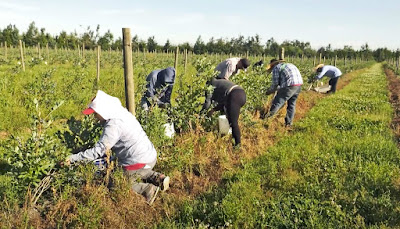U.S. FARM WORKERS WILL SEE UNSAFE HOT DAYS DOUBLE BY 2050
Agricultural employees will see severe summertime weather intensify significantly in the coming years, scientists record.
Their new study takes a look at temperature level increases in counties throughout the Unified Specifies where crops expand. It also takes a look at various strategies the industry could adopt to protect workers' health and wellness.Bermain Judi Slot Online Terdapat Banyak Bonus Menggiurkan
"Studies of environment change and farming have typically concentrated on plant yield forecasts, particularly staple crops such as corn and wheat," says lead writer Michelle Tigchelaar, a postdoctoral scientist at Stanford College that did the work while at the College of Washington. "This study asks what global warming means for the health and wellness of agricultural employees picking vegetables and fruits."
The average picker currently experiences 21 days each year when the everyday heat index—a blend of air temperature level and humidity—would exceed work environment safety requirements.
Using forecasts from environment models, the study shows the variety of hazardous days in crop-growing counties will jump to 39 days each period under 2 levels Celsius (3.6 levels Fahrenheit) warming, expected by 2050, and to 62 hazardous days under 4 levels Celsius (7.2 levels F) warming, expected by 2100.
"I was surprised by the range of the change—seeing a increasing of hazardous days by mid-century, after that a tripling by 2100. And we think that is a reduced estimate," Tigchelaar says.
The study also shows that heat waves, prolonged extends of 3 or more of the most popular days for each region, will occur 5 times as often, typically, under 2 levels Celsius of warming.



